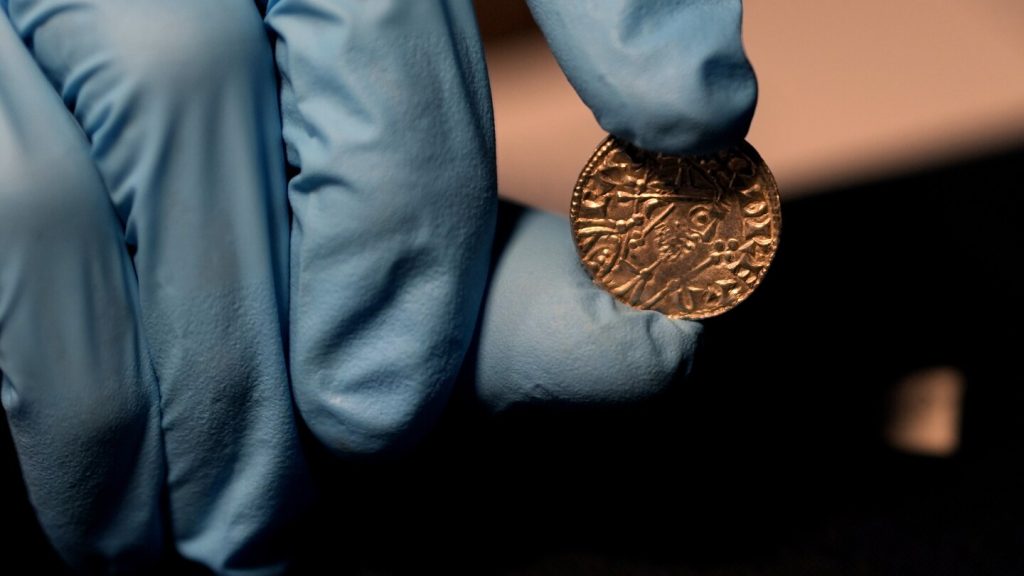In a farmer’s field in southwest England, Adam Staples and six friends discovered a hoard of over 2,500 silver coins that had been buried for almost 1,000 years. Valued at 4.3 million pounds, the coins will shed light on the aftermath of the Norman conquest of England. The hoard, which includes coins minted between 1066 and 1068 featuring King William I and his defeated Anglo-Saxon predecessor Harold II, is considered a significant discovery by experts.
Michael Lewis, head of the Portable Antiquities Scheme, described the hoard as one of the most spectacular discoveries in recent years. The coins will provide a deeper understanding of the Norman Conquest of England in 1066, a pivotal moment in English history. The hoard is expected to challenge certain myths surrounding the conquest, such as the idea of a simple conflict between English and French or good versus bad factions.
The coins in the hoard, known as the Chew Valley Hoard, exhibit remarkable similarities despite being minted before and after the conquest. One side features a monarch’s profile, while the other displays an emblem, such as an elaborate cross for William and the word “pax” for Harold. The hoard was likely buried for safekeeping during local rebellions against Norman rule, providing valuable insight into the historical context of the time.
The Treasure Act in Britain dictates that anyone who discovers historic gold, silver, or precious items must inform the local coroner. If declared treasure, the hoard belongs to the government, and museums can bid for funding to acquire it. In the case of the Chew Valley Hoard, Staples and his fellow detectorists will split half of the 4.3 million pound value, providing them with a significant reward for their discovery. The hoard will go on display at the British Museum before finding a permanent home at the Museum of Somerset in Taunton.
The hoard is expected to challenge preconceived notions about the Norman Conquest and offer a more nuanced understanding of the complex relationships between the warring factions. The discovery will contribute to ongoing research in the field of archaeology and history, providing new insights into a pivotal moment in English history. The coins will also help to tell a different story, highlighting the interconnectedness of the families involved and the broader implications of the conquest.
Overall, the Chew Valley Hoard represents a significant archaeological find that will enrich our understanding of the Norman Conquest of England. The valuable coins, now bound for a museum, will serve as a lasting reminder of a turbulent period in English history and the enduring impact of the conquest on the country’s identity. The discovery is a testament to the dedication and passion of amateur detectorists like Adam Staples, who continue to search for hidden treasures beneath the fields and furrows of Britain.


